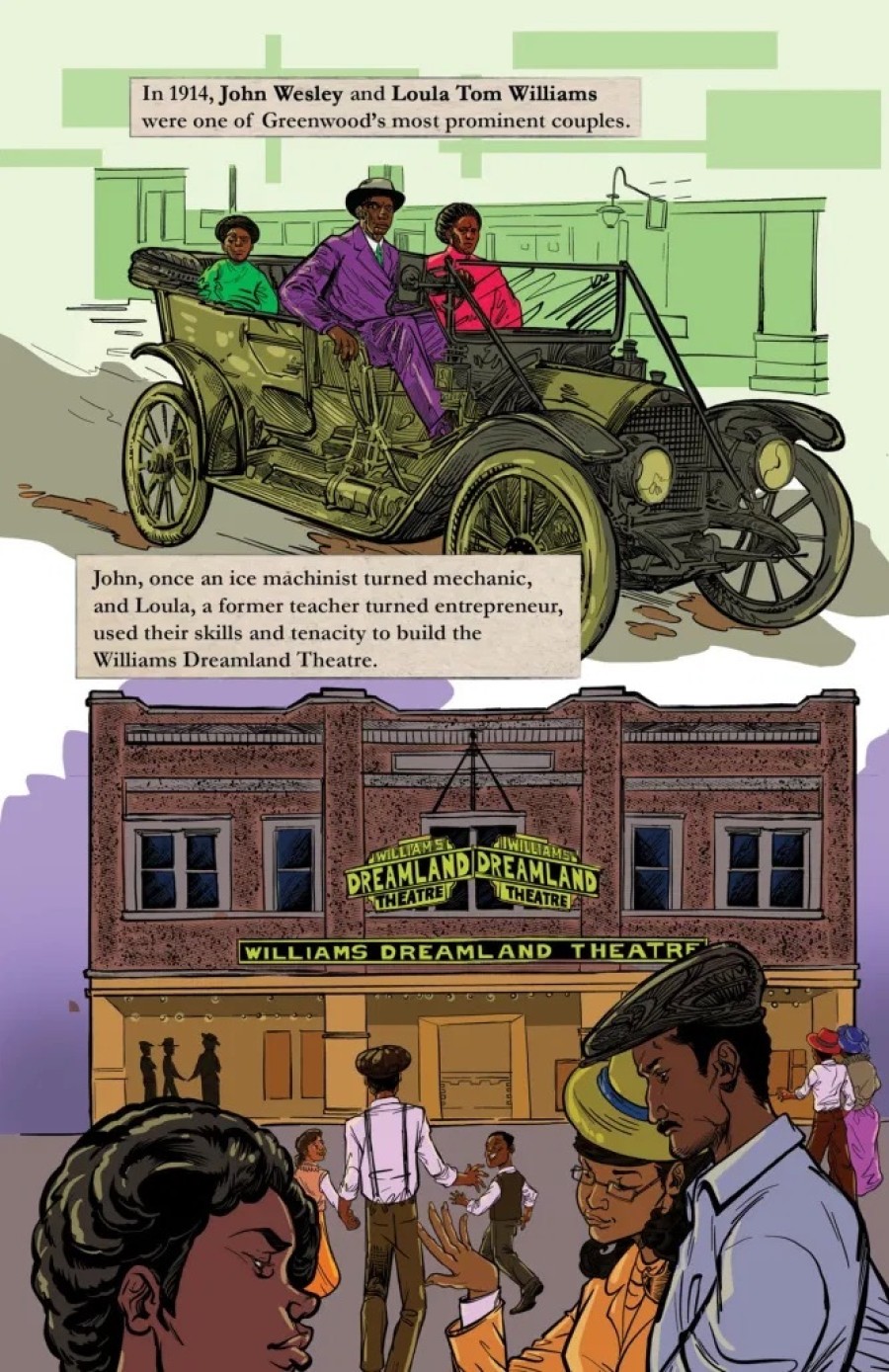

2020 rocked America to its core. The high-profile murders of African Americans Breonna Taylor, Ahmaud Arbery and George Floyd pushed social justice, race and allyship to the forefront of our nation’s consciousness.
But a year after the ubiquitous protests, as the nation prepares to celebrate Juneteenth, the trauma of racial violence persists.
In response, two new graphic novels from Abrams Books are pushing the boundaries of storytelling around the complexity of race in America, reflecting on how racism informs our past and future. Both books grapple with the difficult subject in a visual way that allows the lessons to reverberate with adults and children.
Save It For Later: Promises, Parenthood, and the Urgency of Protest is the latest by National Book Award winner Nate Powell.
And Across the Tracks: Remembering Greenwood, Black Wall Street, and the Tulsa Race Massacre, published by Abrams ComicArts’ Megascope imprint, is a collaboration between writer Alverne Ball and illustrator Stacey Robinson.
The day after Ball found out publishers had greenlit his book, he was diagnosed with COVID-19. While fighting the disease under the backdrop of global protests against racism, the West Chicago native completed the novel in just three days.
“I was waking up in the morning and writing for a few hours and then getting some rest. Some days were harder than others, but me and COVID were partners in this,” Ball recollected with prideful laughter. “The ancestors had to be behind me. I don’t know how I wrote this; I could barely talk, I lost so much weight.”
Ball said he was compelled to write Across the Tracks after seeing the reaction to HBO’s Watchmen. For many, the TV show was their first time hearing about the grim events in Tulsa between May 31 and June 1, 1921.

“Everybody was talking about the massacre, but nobody was talking about what came before that,” Ball said. “And I wanted to combat that. I wanted to combat the trauma porn.”
Across the Tracks is that glimpse at what came before the massacre. In it, Ball and Robinson offer a human narrative of Greenwood. With bright colors and well-researched text, the book is a thoughtful primer on the history of the oft-overlooked people who built the prosperous community that would be known as Black Wall Street.
We learn about prominent figures like Thomas R. Gentry, Tulsa’s first Black real estate tycoon, and John Wesley and Loula Tom Williams, the well-heeled owners of the Williams Dreamland Theatre which was featured in the opening scenes of Watchmen.
In the book’s preface, Ball states that his one purpose was to showcase African Americans’ endeavor to succeed in the face of adversity to build a community.
“Stacey and I understood the importance of what this book meant to the greater story of African American history,” Ball said.
Save it For Later: Promises, Parenthood, and the Urgency of Protest takes on racism from a decidedly different perspective. The novel is the latest offering from Powell, a graphic novelist whose work includes the late Congressman John Lewis’ MARCH trilogy.
In Save it For Later, Powell looks at the divisive and racially charged climate of former President Donald Trump’s administration and what he describes as “witnessing the mainstreaming of fascist ideas and aesthetics in our everyday lives.”
He tells his story in seven connected comic essays that explore themes of allyship, the intergenerational trauma of racism and parenting during a time of “urgent protest.”

Powell said he was spurred to create this book to equip his kids with the information and empathy they need in real-time and the danger of false assumptions about the inevitability of progress shared by generations past.
Save it For Later is an earnest journey of a father navigating a time of fraught political and cultural division. In it, Powell discusses the dangers of paramilitary symbols in pop culture and the importance of allyship.
The graphic novel begins on the night of Trump’s 2016 election victory, but it was completed before the 2020 election.
“My litmus test was that the book’s ideas needed to remain relevant and true regardless of electoral outcome, and that’s kind of the point,” Powell said. He said it’s necessary for everyone to consistently step up and work for an antiracist society. Otherwise, he warned, “the extreme ideas that have risen to the mainstream may persist.”
Rich illustrations — which feature his children as adorable anthropomorphic animals — present a unique narrative about racial violence’s impact on white families. From protesting in present-day Bloomington, Ind., to flashbacks to Powell’s upbringing in the deep south, there is an underlying theme of intergenerational trauma.

“I think it’s the meat and potatoes of parenting,” Powell explained. “I think a lot of white parents who are Generation X and millennials run the risk of passing on the same assumptions we were taught by our baby-boomer parents. The idea that the arc of the moral universe stems for justice on its own. The assumption of democracy holding on a fundamental level. So part of parenthood is reflecting on how each of us is shaped and how to avoid passing on that baggage that was passed on to us.”
Powell said comics have a unique ability to allow readers to project themselves into the shoes of other people. His hope is that they’ll be considered more as an educational tool.
“Comics have unique strengths that function to enhance its storytelling. There’s a level of immediacy that allows a reader to project themselves into the shoes of the people without intermediary level. They possess so much nonverbal information which is often overlooked.”
Both books are currently available from Abrams Comics Arts or wherever you can buy books and graphic novels.
Cianna Greaves is a producer on WBEZ’s Audio News desk. Follow her on @Cicigreaves.